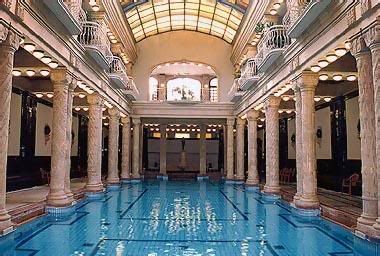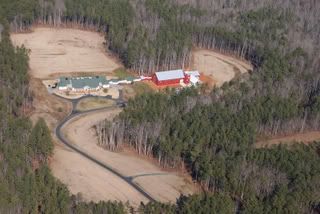My younger brother Ron and I were very big for our age. When people told Pop, "You have really good looking boys," Pop would smile and agree: "Yep, they're strong as an ox and nearly as smart."
Tuesday, September 11, 2007
Biofuels Harm the Environment
Make a list of major problems the world faces – water shortages, food shortages, farming of marginal lands by conversion of timberlands and wilderness areas, water pollution through agricultural runoff, expensive taxpayer subsidies to agriculture and energy producers, to name just a few of many.
The supposed benefits of biofuels are reducing energy reliance, boosting farm revenues and helping fight climate change.
Will biofuels accomplish these goals, or just trade parts of some problems for much larger problems in related activities?
Will biofuels reduce energy reliance? Worldwide energy from biomass makes up about one percent of total energy production, and yet the small biomass energy increases in the past decade have come at a very high price, and the percentage of total energy needs provided by biomass has shrunk.
For example, China is adding one new coal-fired generating plant big enough to supply a city the size of San Diego every ten days.
At the same time, competition with food supplies caused by ethanol production is driving up the costs of tortillas, meat, soft drinks, and all the other products that consume corn in their production.
Is there anyone who truly believes that energy production from biomass will replace a significant part of the 86% of the world’s energy needs provided by oil, natural gas, and coal? Doubling the world’s biomass energy production would scarcely make a dent in the 40% provided by oil, but would add significantly to the misery of the world’s poor.
Considering oil and its high cost and limited reserves reminds me that water soon will become the oil of the Twenty-First Century – essential in just about everything, and increasingly scarce and expensive.
Will biofuels increase farm revenues? Perhaps. Some commodity prices will go up, but the costs of production will go up too. More fertilizer will be needed, and producing it will burn up a lot of natural gas. More water will be needed, and to increase its supply more water storage must be built, more water treatment added, and in many areas desalinization will be necessary.
All of this will be necessary anyway, given the world’s increasing population and economic progress, but far more will be needed in addition to support increased biomass energy production.
Many of the world’s rivers no longer flow to the sea, their waters totally diverted long before they join the ocean’s waves. Many lakes are a small fraction of their former size. More of the world’s wild rivers will be tamed behind dams, and pristine valleys turned into reservoirs.
And farmers may profit.
Or be generously subsidized.
Of course, there’s always the fight against climate change to be won. Just exactly how adding a bit of ethanol to gasoline, clearing a lot more land for crops – the current level of food production will have to be maintained, you know, so more land will have to go into production - and producing fuels from biomass through the liberal application of electrical energy from coal-fired plants – how that will significantly reduce greenhouse gases and climate change is one of the fundamental mysteries of life.
I think I know how biofuels solve the problem.
“And then a miracle occurs!”
That’s what’s sorely needed to make biofuels anything but an expensive and wasteful exercise fueled by environmentalists fevered beliefs that somehow, if they want it badly enough, the fundamental laws of physics will be altered to answer their prayers.
It’s ironic that the Left, loud critics of religious believers, are the most anti-science true believers of all, to think that in some miraculous way the piddling production of energy from "renewable" resources will ever be more than a wishful exercise in wasting resources.
Monday, September 10, 2007
Rush to Judgment - Democrats Prejudge Gen. Petraeus
Once again, the Left has rushed to judgment, exposing their prejudices.
In the case before us, their prejudice is against allowing a clear, open discussion of the current situation in Iraq.
Before General Petraeus had an opportunity to make a statement, or answer a question about Iraq, MoveOn.org ran a full-page ad in the New York Times condemning him as General “Betray Us.”
Their outrageous statements about General Petraeus before he even said a word makes me wonder what they could possibly add to their commentary after he testifies.
(In the interest of attaining and maintaining the highest of journalistic standards, as epitomized by CBS News, all the quotes in this post were made up by me. Following in the tradition of Dan Rather, my quotes, although complete fabrications, conquer the peaks of truthiness that can’t be climbed by mere factual quotes. As Dan Rather might say: “They may be false, but they illustrate an essence of truth that real ones can’t.”)
MoveOn.org: “We agree with what we already said about General ‘Betray Us’ before he answered any questions, and none of his blatant lies changed our minds.”
Question to MoveOn.org: “You already accused him of lying before he said anything. Doesn’t that mean you prejudged him? That you’re prejudiced?”
MoveOn.org: “That’s the stupidest question we have ever heard. Don’t you
know that by definition it is impossible for any Leftist to be prejudiced? What hole did you just crawl out of?”
The Democrats, who don’t believe in preemptive strikes against organizations preparing to attack the United States, are not above mounting a preemptive strike against anyone they suspect may say something they don’t want to hear.
Democrat spokesperson: General Petraeus, isn’t it true that you falsely testified tomorrow that we haven’t already lost the Iraq war? Democrats know that no one should believe anything you ever said or will say, because you work for President Bush.
Democrat spokesperson: And that includes all you lying military bastards! It wasn’t so long ago that you had President Clinton, Vice-President Gore, Senators Hillary Clinton, John Kerry, and almost all of the top Democrat leaders falsely convinced that Iraq had WMD.
Democrats won’t let you get away with that crap again.
General Petraeus: Please allow me a point of clarification. It was the CIA under President Clinton, and the intelligence services of the United Kingdom, France, and many others, plus the United Nations, that thought Iraq had WMD. In fact, they were so sure of it they passed sanctions against Iraq, and threatened military action if the sanctions didn’t work.
Democrat spokesperson: General ‘Betray Us,’ (cough) er, General Petraeus, have you no shame? Now you’re trying to justify the lies you told tomorrow by perverting the history of the sacred rule of President Clinton. You must be another of those history perverts who ignore the hundreds of thousands of Rwandan Tutsis President Clinton saved from slaughter in 1994, or the courageous actions he took to prevent Al Qaeda bombings of our African embassies, the Khobar Towers, and the Cole.
All right-thinking peoples know that if President Clinton had his rightful third term through his surrogate Al Gore that you bastards stole, that 9/11 would never have happened.
Shame, shame, and double shame, General.
You should be ashamed serving in the military of the United States that our revered President Clinton so loathed.
When called upon, He honorably dodged the draft. Were you too stupid to do the same?
General Petraeus: No, I wasn’t drafted, I volunteered.
Democrat spokesman: We already knew you’re a liar, and now we know you’re a stupid one. So just shut up, resign, and drop dead, like a good soldier. The longer you talk, the more you delay the surrender.
(pause)
Ms. Sheehan, did we forget anything?
Saturday, September 08, 2007
"Dumbest Government Study" Award
According to a congressional investigative report to be released this week:
The federal government needs to do a better job addressing how climate change is transforming the hundreds of millions of acres under its watch…”
The 184-page Government Accountability Office report, which Sens. John F. Kerry, D-Mass., and John McCain, R-Ariz., requested in 2004, highlights the extent to which global warming already is affecting the nation's parks, forests, marine sanctuaries and monuments.
Since 1850, the glaciers in Glacier National Park have declined from 150 to 26; climate-triggered coral bleaching in the Florida Keys National Marine Sanctuary is eroding the area's tourist appeal.
Non-native grasses are fast replacing native shrubs in the Mojave Desert, where the grasses also are fueling hotter and longer-lasting wildfires. Even pinyon pines hundreds of years old that have survived droughts before in the Southwest are dying off.
All of this is very interesting. To some it is probably even alarming.
But what is the management of the nation’s parks, forests, marine sanctuaries and monuments going to do to stop the effects of the global warming which has been occurring naturally since 1850?
Is there something they could have done, or could do now, that would reverse the decline of glaciers in Glacier National Parks that began in 1850?
What could that be?
Since the glaciers started declining when the Little Ice Age ended in 1850, I guess the park managers should restart the Little Ice Age to reverse the decline.
What do you do to stop climate-triggered coral bleaching in the Florida Keys National Marine Sanctuary?
I suppose they could do what they did thousands of times during the past millions of years to reverse climate-triggered coral bleaching.
You know what that was, don’t you?
Nothing.
Coral bleaching is a natural process. As reported in National Geographic News:
Coral colonies, when confronted with dramatic environmental changes, may purge themselves of existing algae to make room for other algae more capable of thriving in the challenging conditions. Bleaching, then, may not signify coral's imminent demise, but its ability to tough out new conditions.
In one set of experiments, marine scientist Andrew C. Baker of the New York Aquarium found that corals that undergo bleaching after being exposed to sudden environmental change are more—not less—likely to survive in the long run.
"This counters conventional wisdom that bleaching is detrimental from all perspectives," Baker said.
So do the Two Johns think that national park managers should do something to stop a natural process that has allowed coral to cope with climate changes for millions of years?
Next we have the problem of non-native grasses replacing natural shrubs in the Mojave Desert. What are the national park managers going to do about that?
When they figure out how to stop the infringement of non-native grasses, I hope they will let the rest of us know how they did it. I don’t know about the rest of the country, but we here in Northern California have had invasion after invasion by non-native plant species, and nothing has worked to stop the invasions.
We have Scotch broom, Pampas grass, ice plant, you name it. One characteristic of all our invasive non-native plants is that they grow far better here, in our salubrious Northern California climes, than they ever did in their native lands.
Maybe the national park managers will be able to design and put up fences that will stop the invasion of the non-native grasses.
I hope their fences are more effective at stopping the invasion of non-native grasses, than our current fences in Southern California are at stopping other invasions.
As far as the problem of the non-native grasses fueling hotter and longer-lasting wild fires, the national park managers are probably doing what national park managers all over do, and that is practice forest mismanagement through fire suppression and allowing fuel buildup.
The national park managers at South Lake Tahoe and Los Padres National Forest, among many recent examples, may have finally learned some useful lessons to pass on to others.
Finally, there are the piñon pine dying of drought.
Again, there is an obvious solution that national park managers can easily adopt: do nothing.
In the military, a joke with many variations is told about a Second Lieutenant who, when informed that a surprise inspection team was on its way, shouted to his subordinates, “Don’t just do something, stand there!”
In retrospect, the lieutenant did the right thing. If, when something important is about to happen, the only thing you can think of is to “do something” - clearly giving an invitation to chaos – it's probably best that you just calmly sit back and make a thoughtful analysis of your circumstances.
Since there is abundant evidence that climate change has occurred naturally hundreds of times previously, and that no actions of man will stop Nature from doing what comes naturally, the prudent national park manager takes note of this and prepares informative displays conveying this information to the interested public, and to the ignorant government inquirers.
It won’t change anything. Nature will continue its natural ways, and government inquirers will continue to labor in ignorance, but at least the park employees will be spared doing all sorts of wasteful, ineffective, and useless things to try to stop the inevitable.
Inevitable natural forces:
1. Climate change
2. Ignorant government agency inquiries
Some things just can’t be stopped.
It's The Principle That Counts
“Better slow it a bit,” I thought.
Just as I reached the south side of Anchor Bay, the CHP was behind me with his lights on. I thought he wanted to pass, so I pulled into the first part of the Anchor Bay parking lot and slowed, then stopped when he pulled in behind me. I was surprised when he stopped behind me, then got out of his patrol car.
“Darn,” I thought, “he’s going to ticket me for speeding, probably three or four miles per hour over the speed limit.”
Instead he said he was ticketing me for not wearing my seatbelt.
“I was wearing my seatbelt. I always wear my seat belt,” I replied.
“You are now, but you weren’t when I passed you,” he countered.
He then took my driver’s license and vehicle registration, and walked to the rear of my car to write the ticket.
When he came back, he said: “I could have got you for speeding, but that’s a moving violation, so I’m letting you off light just ticketing you for a seatbelt violation.”
(These quoted remarks, including my own, are actually paraphrased, but are accurate to the best of my recall.)
I protested again, and mentioned that I was a retired Air Force officer, and that in my over 21 years of service it was a military requirement to wear seatbelts at all times, and that I always did then, and always have since.
He said: “Then I’ll see you in court.”
And I said (I think): “I’ll be there.”
I’ll go to court because it’s a matter of principle. I may have been speeding slightly, but he didn’t ticket me for that. I was wearing my seatbelt, and I won’t say I wasn’t and pay a fine just because that’s easier than going to court.
When we go to court, there can be only one issue, and it’s very simple. The CHP officer will say I wasn’t wearing a seatbelt, and I’ll say I was.
My position will be that the CHP officer was mistaken, and could not see me well enough to notice that I had my seatbelt on.
The only position available for the CHP officer is to say I’m lying.
Neither of us can prove the other wrong, or prove that we were right.
When the judge decides, he will have no idea if he was right or wrong.
Neither will the CHP officer.
But no matter what the verdict, I’ll know.
Update: I had my day in court, and won! The officer was there, and said, among other things, that he could see the metallic buckle (or at least a reflection from it) over the top of my shoulder. I showed six photographs, similar to the one below, including one enlarged to 8 by 10.5 inches, that showed that all you could see was my hands on the steering wheel, and that the reflection of the high overcast off the windshield blocked the view of everything else on the driver's side.

If the CHP officer could even see me, let alone whether I have my seatbelt on, he must have X-ray vision.
Modern Polar Bears are Wimps
I read an Associated Press article in the San Francisco Chronicle headlined: Polar Bear Population Seen Declining, By JOHN HEILPRIN, Associated Press Writer, Saturday, September 8, 2007.
According to the article, “Two-thirds of the world's polar bears will be killed off by 2050 — and the entire population gone from Alaska — because of thinning sea ice from global warming in the Arctic, government scientists forecast Friday.”
What’s wrong with our modern polar bears? Just when they had recovered from the hunting – now banned – which had cut their numbers by the 1960s to half their population today, government scientists now forecast their doom from global warming.
What did their polar bear ancestors do during the numerous periods of natural global warming?
What?
You didn’t know that polar bears have survived many prior periods when Arctic ice was reduced as much, or more, than is currently forecast?
Apparently you’re not alone in your ignorance. Among others, you’re keeping company with government scientists.
According to a Swedish study in 1993 of the fossils of Arctic algae: “Gunilla Gard of the University of Stockholm believes that several times during the past 7000 years warm spells have melted large parts of the central Arctic Ocean.”
The uppermost algae fossils appeared to be associated with the Medieval Warm Period of AD 800 to 1200, and other fossils come from the past 7,000 years, when it was sometimes warmer than today.
Gard found similar fossils deeper down in the sediment cores, indicating that the Arctic ice partially cleared at various times from about 128,000 to 71,000 years ago - a period covering the latest interglacial and the early part of the latest ice age. However, the age of the older fossils is also uncertain. Other studies indicate that the peak sea level during the latest interglacial was a few metres higher than today, implying that peak temperatures were higher.
Obviously, polar bears existed then, and somehow survived those earlier periods when peak temperatures were higher, and Arctic ice was greatly reduced.
Why can’t modern polar bears do the same?
For hundreds of thousands of years the Earth has experienced dramatic climate changes, and polar bears somehow adapted and survived.
Other animals were not so fortunate, were not so adaptable.
Why did the saber-toothed tiger, the mastodon, the wooly mammoth, the horse in the Americas, and many other animals perish without the benefit of man-caused climate change?
Could it be possible that natural climate change was enough to cause their extinction, but that the polar bears were more hardy and adaptable, and survived?
Since Arctic ice in recent periods has been greatly reduced, and the polar bears survived, I’m betting they’ll make it through this period too, and be all ready for the coming Ice Age.
When the ice sheet over Chicago is a mile thick, as it was 18,000 years ago, I’ll bet polar bears will be enjoying seal feasts somewhere between New York and Virginia shores. Or if they’re lucky, and we have an ice age like some previous ones where the Earth almost became a white ball, polar bear feasting may extend to Florida.
And athletes need only train for the Winter Olympic Games.
Friday, September 07, 2007
Dental Implants in Hungary
Then my dentist gave me more bad news. "The two upper right implants are mobile. They've failed, and it's just a matter of time before you lose them too."
I gingerly checked them, and they moved a lot side to side. So did the bottom right impant. "They should be very firm, not mobile like that," my dentist said.
The bottom line is that concerning my teeth, I'm worse off now than before I got the implants. It won't be long before all I have are the anchors embedded in my jaws, with no implants in them. Also, the anchors are not compatible with any fixes or repairs I could get in the United States, and there is no reason to believe I could get the dentists in Hungary to make them work any better than they do now.
Now with each bite I expect an implant to pop out.
Sometimes saving money can get mighty expensive.
“There’s no place like home, there’s no place like home. (Click, click)”
Alice and I love travel, and we love being home. The part of travel that makes it so easy to love our home in Gualala so much is the beginning and end of each trip. We usually stay a night or two, going and coming, with Alice’s two lovely daughters and their delightful families in Walnut Creek.
However, we can’t magically teleport from one place to the next, so we take our only practical option, and drive. So do millions of San Francisco Bay Area residents and commuters. We all congregate on the freeways, and see how successful we can be at not getting anyplace in a reasonable period of time.
When we got back from our Hungary trip on Friday, August 31, and checked into our hotel in South San Francisco, we heard an announcement that the Bay Bridge was closing for three or four days to complete repairs to a section. The next day our thirty minute trip to Walnut Creek took three hours.
The Hungary trip was a dental holiday. About a year ago I saw an item on the Internet about the high quality and low cost of Hungarian dentistry. The article caught my attention because I had just lost another two teeth as a late payment for the sins of growing up poor far from dental practitioners. By the time Point Arena got a dentist in the late 1950s, I was sixteen years old and needed many fillings and one molar extracted that was too decayed to save. As the years passed, I lost another seven teeth for a total of eight missing, five upper rear and three lower rear.
As luck, and dental neglect would have it, the teeth I lost did not lend themselves to logical or easy replacement via bridges or dentures. When that realization sunk in, then the thought of implants arose. I went to a specialist in Santa Rosa and found him eager to put in three implants for about $15,000, and then let a regular dentist add the crowns for another $2,800.
It would cost me $17,800 to get one implant upper right, one upper left, and one lower right. That would still leave a significant gap upper right. A fourth implant would close the gap, but add about $5,000 to the cost for a total of almost $23,000.
That’s when the article about high quality, inexpensive Hungarian dentistry grabbed my attention.
Why is there high quality dentistry in Hungary? One reason is that good dentistry is a Hungarian tradition, and their dentists train longer, and more comprehensively, than in neighboring European countries like Austria. Then they charge about 20 to 25 percent of what Austrian, German, British, etc., dentists cost. As a result, their volume of business, and the competition for business, produces excellent, low cost dentistry.
Of course, it also helps that the European Union makes its dentists in developed countries charge very high prices, which drives most of their customers to Hungarian dentists. The European Union (EU) defends this practice by saying it protects dentists from ruinous competition.
Right. It protects EU dentists so well, that many Austrian and German dentists go to Hungary for their own dental treatment. And can barely attract enough customers to continue in dental practice in their homelands.
We arrived in Budapest on the evening of Thursday, August 23, after spending two nights in Brussels.

Alice viewing Brussel's famous Monsieur Pis, an activity apparently indulged by all Brussels visitors.

Monsieur Pis entertains us - apparently we're not a demanding audience
My suitcase, obviously not happy to be in the Capitol of the (socialist) European Union, skipped Brussels but rejoined me in Budapest. Our two-night stay in Brussels without my suitcase motivated me to rethink all the things I have been putting in my checked luggage because of restrictions on what can be in my carry-on bag. I had gotten into the habit of putting my entire shaving kit in my checked bag because of its liquids and razor. Henceforth I will take it with me filled with small bottles of essentials, and larger bottles for longer trips in my checked luggage. Plus I’ll put a more generous allocation of underwear and socks in my carry on.
And my umbrella.
The Implant Center (also referred to as Smile Savers of Hungary) had a car and driver, Thomazh, meet us at the Budapest airport and drove us to our excellent hotel, the Hotel Gellert in Buda on the shore of the Danube near the (now under repair - the photo shows it before repairs started) Freedom Bridge.

The Freedom Bridge over the Danube, with Hotel Gellert

The Hungarian Gypsy band at Hotel Gellert serenaded Alice almost every night

The Hotel Gellert spa had several large pools, including three natural thermal ones in addition to this covered swimming pool at room temperature

Hotel Gellert outdoor wave pool
The next morning, promptly at 8, Thomazh’s older brother Lazlo picked me up at the hotel and drove me to the clinic. Both brothers spoke excellent English, since they both had attended high school in Bethesda, Maryland, while their father was working in the Hungarian Embassy in Washington, DC.
After a short wait, just long enough for me to admire the pretty ladies who manned (decorated?) the reception lounge, one of them took me to the X-ray room and made a panoramic scan of my teeth. Then back to the reception lounge to resume admiring, but not for long for soon it was time to begin serious dentistry.
Dr. Attila Kaman MD, DDS, greeted me and escorted me into a nice, modern clinic office and into a dentist chair. Dr Kaman is the head of the clinic, and would do my implant surgery. According to his web site, Dr. Kaman is “One of the most experienced specialists in implantology in Europe if not the world having placed 9,000 successful implants in the last 6 years.” For the next two hours every thing he did convinced me that his reputation was well deserved.
My procedure was painless, and each step of the process flowed smoothly and precisely. Dr. Kaman began with the left upper rear implant. After numbing, he opened the gum and drilled the first hole using successively thicker drill bits. Then he inserted processed cow bone material into my sinus cavity (the “sinus lift”) to build up the bone thickness, after which the implant anchor was screwed into my jaw, and the incision closed with stitches.

My X-ray showing how the implant (CamLogs) would be placed. The shaded areas above the upper implants show the sinus lifts
Dr. Kaman repeated the procedure and implanted two anchors in my right upper rear jaw.
The last implant, in my right lower rear jaw, went very quickly because the bone there is thick and no procedure similar to a sinus lift to build up the bone was needed.
Total cost for the sinus lifts and four CamLog anchors, $6,304.
Remaining expenses when I go back next year to get four crowns fitted to complete the implants, $1,408, for a total cost of $7,712 and a savings of over $15,000. I could reduce the savings by about $3,000 to account for the cost of the trip, but we enjoyed the trip so much that it doesn’t seem fair to add it to the cost of the dentistry.

This X-ray shows how my teeth will look when the four caps are fitted next year
We love to travel, we loved the trip, it was time for a vacation, and we’re already looking forward to returning next year.

Alice was impressed by the statues with buff buns

We had a long climb ahead of us, but I didn't know it yet, so I'm smiling (the cheek with the most swelling from the implants is in shadow, so I look almost normal)
And looking forward to spending almost a week in Turkey then.
I’m already reviving my almost forgotten Turkish phrases in my mind (phonetically):
Mir haba, akadash (Hello, friend).
Nasil sen? (How are you?)
Kash para? (How much does it cost?)
Chok para! (Too much!)
As long as I remember that no matter what price I’m given, it’s too much, I should be OK.
Chok te she kara darum. (Thank you)
Al Gore – Eco-Warrior on Luxury Private Jet!
So said cigarette smokers trying to discourage me from smoking as a teenager in the late 50's. I, of course, ignored their excellent advice, but finally had the good sense to quit after sixteen years. Pop ignored his own advice, and died of throat cancer at age 68.
Pop and most smokers knew they were harming their own health, but they never thought that quitting smoking was necessary to save the world.
However, many prominent leaders of the Democrats are firmly convinced that reducing the production of carbon dioxide is all that can save the world, and are tirelessly traveling the globe preaching the world's desperate need to go on a low-energy diet.
Right now.
Time's a wastin'.
In light of Democrat leaders' tireless (and tiresome) proselytizing about the evils of man-caused global warming, it's interesting to see their personal contributions towards saving the planet.
Per the Drudge Report:
As former Vice President Al Gore waits to hear if he has won this year's Nobel Peace Prize for his tireless effort on climate change, a new video will air this weekend capturing Gore on a fuel-guzzling private jet!
FOXNEWS host Sean Hannity is set to unleash the damning video this Sunday night, network sources reveal.
Then there's this.
When Al Gore is not jetting all over the world, creating one of the largest carbon footprints on Earth, he returns to relax at his modest Nashville home, one of the two listed below. (vetted as true by a Snopes investigation of Urban Legends):

HOUSE # 1: A 20-room mansion (not including 8 bathrooms) heated by natural gas. Add on a pool (and a pool house) and a separate guest house all heated by gas. In ONE MONTH ALONE this mansion consumes more energy than the average American household in an ENTIRE YEAR. The average bill for electricity and natural gas runs over $2,400.00 per month. In natural gas alone (which last time we checked was a fossil fuel), this property consumes more than 20 times the national average for an American home.
This house is not in a northern or Midwestern 'snow belt,' either. It's in the South.HOUSE # 2: Designed by an architecture professor at a leading national university, this house incorporates every 'green' feature current home construction can provide. The house contains only 4,000 square feet (4 bedrooms) and is nestled on arid high prairie in the American southwest. A central closet in the house holds geothermal heat pumps drawing ground water through pipes sunk 300 feet into the ground. The water (usually 67 degrees F.) heats the house in winter and cools it in summer. The system uses no fossil fuels such as oil or natural gas, and it consumes 25% of the electricity required for a conventional heating/cooling system.
Rainwater from the roof is collected and funneled into a 25,000 gallon underground cistern. Wastewater from showers, sinks and toilets goes into underground purifying tanks and then into the cistern. The collected water then irrigates the land surrounding the house. Flowers and shrubs native to the area blend the property into the surrounding rural landscape.
HOUSE # 1 (The 20-room energy guzzling mansion) is outside of Nashville, Tennessee. It is the abode of that renowned environmentalist Al Gore.
HOUSE # 2 (model eco-friendly house) is on a ranch near Crawford, Texas. Also known as 'the Texas White House,' it is the private residence of the President of the United States, George W. Bush.
So whose house is gentler on the environment?
Yet another story you WON'T hear on CNN, CBS, ABC, NBC, MSNBC or read about in the New York Times or the Washington Post. Indeed, for Mr. Gore, it's truly 'an inconvenient truth.'

Home of John Edwards, equally as environmentally sensitive as Al Gore's.
(Consider all the carbon offsets - also known as trees - that were killed to clear this space for and around the Edwards edifice. It seems all these Democrat leaders have edifice complexes.)
Of course, Al Gore is not the only environmental hypocrite leading the Democrats. John Edwards has his 28,000 square-foot mansion, which he says is “carbon neutral” because he purchases carbon “offsets.”
Carbon offsets? Aren't those like the Indulgences Catholics could buy to wipe away sin?
Actually, no.
Indulgences wiped away sins already committed and forgiven, but did not give the sinner license to continue his sinning ways.
However, carbon offsets allow the "sinner" to keep on "sinning" with a clear conscience, just as long as he keeps practicing "pay-as-you-go" sinning. Atmospheric carbon dioxide still increases, but the conscience of the sinner is salved by the prospect that, in some future time, something he paid for may remove the damage done.
At least in theory.
Amazingly, this is the same John Edwards who wants businesses to operate under firm carbon caps, and to require businesses to make draconian cuts in carbon dioxide generation. For businesses, carbon offsets are not good enough. For John Edward’s personal needs, carbon offsets are just fine.
For those who aren't rich enough to buy forgiveness for destroying the planet, you get to make the sacrifices demanded by Al Gore and John Edwards.
Al and John don't sacrifice anything except a relatively small portion of their vast wealth.
Incidentally, their burden of sacrifice is made lighter because it's either tax deductible or paid from campaign contributions.
How nice to have taxpayers and supporters subsidize your sinning!
Wednesday, September 05, 2007
The Coach and Horses
Both rooms were small, and since the Earth had experienced a quarter-century of global cooling, the rooms also were cold. That winter, all of England seemed cold and dreary. The UK was just then beginning to exploit its North Sea gas fields, and almost all of England was still using coal-fired fireplaces and furnaces for warmth.
Our rooms had small electric heaters, fueled by the shilling coins we fed into them.
We had breakfasts in our room. We set a box outside the window, and it stayed cold enough to keep the milk, cheese, bread, condiments, and a few other perishable items fresh. I had lunches on the base, and Marilynn and the boys would join me or have sandwiches in the room. Marilynn and I had almost all our dinners in the restaurant of the Coach and Horses. Before having our dinners, we would order dinner for the boys and feed them in their room, then go to the restaurant for a quiet, relaxing meal. I worked my way through the menu top to bottom (several times), but Marilynn had halibut every night.
I rode the bus to the base and back for several days, then bought a used 1962 Morris 1100 automobile.
On most winter days a noon walk was like an evening walk. The Sun, never seen, provided a feeble glow through the thick overcast, and brought little warmth. In the far northern latitudes of the UK, the Sun apparently rose after 9 am, and presumably set about 3 pm. The black of night briefly was interrupted by the dull grey of day.
The air was redolent of coal smoke, and the exteriors of buildings were grimy with soot.
I loved it.
My wandering soul was home. I had found where I belonged.
In retrospect, my reactions to England were probably what you would expect from someone who loved reading the adventure classics of English literature, and watching movies like “Twelve O’clock High,” “Mrs. Miniver,” and “Ivanhoe.” Even “The Quiet Man,” set in Ireland, made my heart yearn for an English home I had never known. Just a picture of a John Constable painting of the English countryside made my chest ache in longing to return to a place I had never been.
Marilynn, although not as smitten as I was with England, adapted quickly and enjoyed our new adventure, just as she had in Turkey six years earlier.
Our temporary stay in the Coach and Horses began to have the feel of permanence. Our arrival in January, 1970, followed the arrival of the 67th Aerospace Rescue and Recovery Squadron, which had just been kicked out of Wheelus Air Force Base, Libya, by “Colonel” Muammar Gaddafi “Duck” in late 1969. Every house I hoped to rent had already been found and rented by someone from the 67th. While I was tied down working twelve-hour days, seven days a week, preparing the Fiscal Year 1971 budget – I arrived the same week its preparation began – the 67th AARS personnel and their families had plenty of spare time and resources to be very formidable house-hunting opposition.
One day I skipped lunch to drop in to the Base Housing Office to see if, by some miracle, something had popped up and gotten past the 67th bird dogs. Just as I reached the office door, I heard profanity muttered by an Air Force Chief Master Sergeant who was getting out of his car in the parking lot. Among the expletives (deleted) I heard him say something about how !@#%&*! it was that the Air Force would make a senior NCO and his family move again after they had just found a home and moved in a few months before.
“Excuse me, Chief,” I said, “could I beg a few moments of your time?”
I guess he noticed my 27-year-old face didn’t go with my 2nd Lieutenant bars, so he cordially explained he had just received reassignment to RAF Upper Heyford, near Oxford, to be the aircraft maintenance nanny for the F-111, a versatile swing wing tactical bomber due to arrive at Upper Heyford in September, 1970.
He had found a big, four-bedroom farmhouse in Saxmundham a few months before, was all settled in, and now he was going to Base Housing to let them know it would soon be available to rent.
“That won’t be necessary,” I assured him. “I’ll rent it.”
“Don’t you want to look at it?” he asked.
“No, it’s perfect,” I replied, and arranged to contact the owner.
The owners, the Underwoods of Bury St. Edmonds, seemed happy with the arrangement. I was happy to find the Underwoods would charge us the same rent as the Chief’s family, 52 pounds ($125) a month. The Underwoods assured me they would be delighted to continue driving to Saxmundham once each month to pick up the rent in pound notes, no checks please.
The Chief and his family were packed quickly by the Air Force and moved to Upper Heyford, and our household goods, which were sitting in storage at the Felixstowe docks, were delivered immediately.
We moved into The Street Farm, Saxmundham, the 16th of February, in the middle of the strongest (and only) snowstorm we experienced the five years we were in England.
The Street Farm was at the top of Street Farm Road, just a block off the A-12 highway (at that time; the A-12 has since been rerouted), behind the telephone building operated by the General Post Office, and past the office of the Suffolk Constabulary.
The Street Farm itself was a large, two-story farm house with four bedrooms and a bathroom upstairs, two living rooms, a kitchen, dining room, pantry, bathroom, bonus room, and utility room downstairs. It had a large fenced yard with a garden in back, overlooked a pasture, and beyond it was barns, stables, and an old dairy no longer in use. On the other side of Street Farm Road was a smaller house for the farm’s caretaker and his family.
We lived there for four wonderful years.
(Please click on the highlighted text to bounce to the next installment about my baptism into Base Budgeting at RAF Bentwaters)
Monday, September 03, 2007
Globalonly - Now Mapmakers Stoke Global Warming Hysteria
Except that the article's headline did not match what was actually presented.
Dramatic pictures that show how global warming is changing world maps, Daily Mail, September 3, 2007
The effects of global climate change are clear to see on the latest world maps.
In the four years since the last edition of the Times Comprehensive Atlas Of The World went on sale, cartographers have been forced to redraw coastlines and reclassify types of land.
It all sounds pretty convincing that global warming is being documented in redrawn maps, until you actually read the article and find that the examples are of vast changes caused by poor water management. Almost all the changes are to lakes and rivers, not because of the effects of global warming, but because water has been diverted primarily for agricultural purposes.
The only examples of sea level concerns are the usual: Tuvalu, low lying islands in the Pacific; Bangladesh, where many factors, including subsidence from ground water extraction and other causes could be involved; and a shrinking sea shore at a remote village in Alaska.
From 1949 to 1960, and from 1998 to present, I have lived near Point Arena on the Northern California coast. In that 58-year period, I have often visited places along this coast that appear now to be just as they were then. Why are rising seas such a problem elsewhere, when there is no evidence of significant change here?
Why is Tuvalu always in jeopardy? Since most scientific studies show that Tuvalu is not being inundated by rising seas, it appears that the Tuvaluans are grasping at the profit potential of claiming global-warming victimhood, which is probably greater than their current primary souces of income: domain name hosting, and postage stamps.
The good people of Tuvalu were probably devastated when recent studies actually found a drop in their sea level. They may be stuck on Tuvalu for a long time.
The article voices concern that sea levels could be rising 3mm per year in the vicinity of Bangladesh.
Sea levels rising 3mm per year? They have been rising at that rate, or much higher, since the end of the last Ice Age 18,000 years ago. For the uninformed, total sea level increase in that period is over 400 feet, or an average of over 7mm per year. And all that was without any help from mankind, apart from an occasional overcooked mastodon steak. Mankind has created far more sea intrusion from over pumping ground water causing subsidence - over 20 feet in some places like the California Central Valley - than could ever be attached to mankind's paltry addition of about two percent to naturally created CO2.
Look at the examples given in the article, and ask yourself if it doesn’t seem the problems are caused by poor water use practices, not global warming due to mankind's contribution to total greenhouse gases.
Global warming has always been a natural phenomenon that the Left has been looking to blame on economic development and increasing prosperity.
The Left worships absolute control over human activities, as evidenced by their love of totalitarian governments. The Left has never been comfortable with economically free individuals having personal property rights, and looks at increased regulation to stop “man-made” global warming as their last, best hope to regain the control over individuals lost when dicatatorships and monarchies were swept away by democratic institutions.

